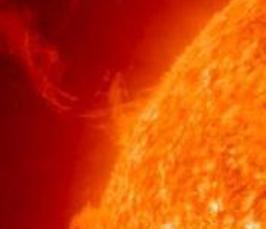A giant solar filament was visible on the solar surface between 8-23 November 2011. The filament stretched over more than half a solar diameter. Multi-wavelength data from the SDO instrument AIA (171, 193, 304, and 211 Å) were used to examine counter-streaming flows within the spine of the filament. H-alpha images from the Kanzelhöhe Solar Observatory provided context information. We applied local correlation tracking (LCT) to a two-hour AIA time series from 16 November 2011 to derive horizontal flow velocities of the filament. To enhance the contrast of the AIA images, we employed noise adaptive fuzzy equalization (NAFE), allowing us to identify and quantify counter-streaming flows in the filament. We detected counter-streaming flows in the filament, visible in the time-lapse movies of all the examined AIA wavelength bands. Using time-lapse movies we found that these persistent flows lasted for at least two hours. Furthermore, by applying LCT to the images we clearly determined counter-streaming flows in time series of 171 Å and 193 Å images. In the 304 Å wavelength band we found only minor indications for counter-streaming flows with LCT, while in the 211 Å wavelength band the counter-streaming flows are not detectable. The average horizontal flows reach mean flow speeds of 0.5 km/s. The highest horizontal flow speeds are identified in the 171 Å band with flow speeds of up to 2.5 km/s. The results are averaged over a time series of 90 min. Because the LCT sampling window has a finite width, spatial degradation cannot be avoided, leading to lower estimates of the flow velocities as compared to feature tracking or Doppler measurements. The counter-streaming flows cover about 15-20% of the whole area of the EUV filament channel and are located in the central part of the spine. In conclusion, we confirm counter-streaming flows are omnipresent also in giant quiet-Sun filaments.
[mehr]
